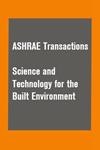Quantitative analysis of cost savings and occupants’ preferences in grid-interactive smart home operation
IF 1.6
4区 工程技术
Q3 CONSTRUCTION & BUILDING TECHNOLOGY
Science and Technology for the Built Environment
Pub Date : 2023-08-07
DOI:10.1080/23744731.2023.2244337
引用次数: 0
Abstract
Many utility companies in the United States have introduced time-of-use (TOU) rates for homeowners with the goal of regulating electricity consumption during peak hours. The electrical appliances in homes include various thermostatically controlled devices, such as air conditioners (AC) for thermal comfort, and nonthermostatically controlled devices such as clothes washers. As a result, homeowners face the complicated challenge of economically operating multiple electrical appliances in their homes while maintaining comfort and convenience. This is usually due to the lack of an explicit understanding of the correlation between cost saving and the users’ comfort. To understand the correlation, this article is designed to construct a framework by integrating three major components: a multi-objective optimization method accommodating multiple competing goals with different weights, a learning-based system modeling approach describing the dynamics and thermal coupling effects of appliances, and a novel comfort index method differentiating preferred and acceptable thermal comfort. Our proposed framework can allow the indoor air temperature to fall into the "preferred" range with a marginal cost increase. The simulation result shows that an additional 8 h for the preferred thermal comfort can be achieved with a cost increase of only 1.77%.网格交互智能家居运营中成本节约和用户偏好的定量分析
本文章由计算机程序翻译,如有差异,请以英文原文为准。
求助全文
约1分钟内获得全文
求助全文
来源期刊

Science and Technology for the Built Environment
THERMODYNAMICSCONSTRUCTION & BUILDING TECH-CONSTRUCTION & BUILDING TECHNOLOGY
CiteScore
4.30
自引率
5.30%
发文量
78
期刊介绍:
Science and Technology for the Built Environment (formerly HVAC&R Research) is ASHRAE’s archival research publication, offering comprehensive reporting of original research in science and technology related to the stationary and mobile built environment, including indoor environmental quality, thermodynamic and energy system dynamics, materials properties, refrigerants, renewable and traditional energy systems and related processes and concepts, integrated built environmental system design approaches and tools, simulation approaches and algorithms, building enclosure assemblies, and systems for minimizing and regulating space heating and cooling modes. The journal features review articles that critically assess existing literature and point out future research directions.
 求助内容:
求助内容: 应助结果提醒方式:
应助结果提醒方式:


